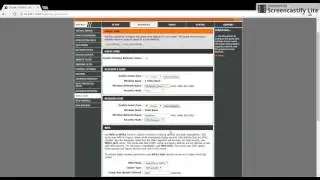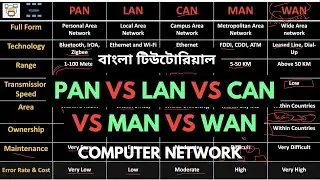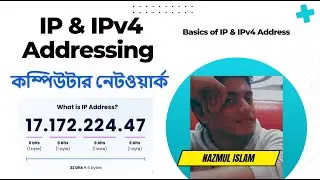Introduction to IP & IPv4 Addressing in computer network in bangla | Basics of IP address in bangla.
IP VS MAC address: • Introduction to MAC Address in Computer Ne...
Importance of IP and MAC address: • Importance of IP & MAC address & Reason t...
Computer Network Playlist : • Computer Network In Bangla | কম্পিউটার নেট...
Wireless Ad Hoc Network Playlist: • [ওয়্যারলেস সেন্সর নেটওয়ার্ক] Wireless Sens...
Machine Learning full Playlist: • Machine Learning Playlist Bangla Tutorial ...
Management Information System Playlist: • Management Information System (MIS) in Ban...
Algorithm Playlist: • Algorithm in Bangla | অ্যালগরিদম বাংলা টিউ...
Data Structure Playlist: • Data Structure full playlist in Bangla | ড...
An IP address (internet protocol address) is a numerical representation that uniquely identifies a specific interface on the network.
Addresses in IPv4 are 32-bits long. This allows for a maximum of 4,294,967,296 (232) unique addresses. Addresses in IPv6 are 128-bits, which allows for 3.4 x 1038 (2128) unique addresses.
The total usable address pool of both versions is reduced by various reserved addresses and other considerations.
IP addresses are binary numbers but are typically expressed in decimal form (IPv4) or hexadecimal form (IPv6) to make reading and using them easier for humans.
The Internet Protocol (IP)
IP stands for Internet Protocol and describes a set of standards and requirements for creating and transmitting data packets, or datagrams, across networks. The Internet Protocol (IP) is part of the Internet layer of the Internet protocol suite. In the OSI model, IP would be considered part of the network layer. IP is traditionally used in conjunction with a higher-level protocol, most notably TCP. The IP standard is governed by RFC 791.
How IP works
IP is designed to work over a dynamic network. This means that IP must work without a central directory or monitor, and that it cannot rely upon specific links or nodes existing. IP is a connectionless protocol that is datagram-oriented., so each packet must contain the source IP address, destination IP address, and other data in the header to be successfully delivered.
Combined, these factors make IP an unreliable, best effort delivery protocol. Error correction is handled by upper level protocols instead. These protocols include TCP, which is a connection-oriented protocol, and UDP, which is a connectionless protocol.
Most internet traffic is TCP/IP.



















